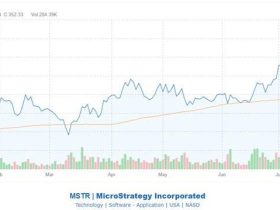The stock market tried to fight the selling as the media experts came up with more reasons to argue why stocks should not move higher. Near the top of the new list is the fact that the dollar closed higher for the eighth week in a row. This coincided with last week’s Reuter survey where 81% of the FX strategists surveyed think that the risk is for further dollar gains. Their outlook for 2024 is less bullish.
On the weekly chart of the Dollar Index, the 38.2% resistance of the decline from the 2022 high at 115.06 has just been exceeded with the 50% resistance at $106.91. The March 2022 high is at 105.87 with the starc+ band at 106.52.
The weekly on-balance-volume (OBV) is positive as it overcame its WMA in early August. The volume has been steady but well below the levels seen in 2022. The Herrick Payoff Index (HPI) uses volume, open interest and price to determine money flow is also positive at +22. It turned positive at the same time as the OBV.
The stronger-than-expected ISM Services Index last week combined with the stronger dollar and higher crude prices suggested to some that inflation could stay high and push the Fed to raise rates further.
Almost a year ago one of the most bearish Wall Street strategists, Mike Wilson from Morgan Stanley
MS
AAPL
MSFT
By the start of the year, the conviction that a recession was inevitable and the expectations for weak earnings were often used as a key argument against buying stocks. Though both AAPL and MSFT have reported a decline in earnings because of the dollar overall earnings have been stronger than expected.
The point of this discussion is that even though the outlook for both the dollar and crude oil are currently positive it does not guarantee that the impact of these markets has to be either negative or positive for stocks. Therefore I recommend using technical indicators such as the A/D line, OBV, and MACDs to tell you whether a market is likely to move higher or lower.
Only one of the markets, the Dow Jones Utility Average was higher last week as it gained 0.6%. However, it is down 9.9% year-to-date and the WK_DTS readings on its largest holdings are all negative. It was another tough week for the Dow Jones Transportation Average as it was down 4% while the iShares Russell 2000 declined 3.6%.
The Nasdaq 100 and S&P 500 were down 1.4% and 1.3% respectively while the Dow Jones Industrial Average was 0.8% lower. The market internals were even weaker than the averages as on the NYSE there were 750 issues advancing last week and 2301 declining. On the Nasdaq Composite, there were 1294 advancing stocks and 3458 declining.
Since the start of August, there have generally been more New Lows on the Nasdaq Composite than New Highs. For example, on Friday there were 248 stocks making New Lows while only 40 New Highs. A reading in the New Lows, above the August peak at 288, line b, would be more negative. The New Highs peaked in July at 278 and though it has formed sharply lower highs, line a, there was no divergence as the average did not make a new high.
The Spyder Trust (SPY
PY
SPY
The daily S&P 500 Advance/Decline line flipped back to positive on August 28th providing for a good long entry the next day as SPY opened at $442.65 and closed at $449.16. The S&P 500 rose slightly on Friday to close barely above its WMA and will look quite bullish on a strong upday. Of course, a day of solid selling will drop the A/D line well below its WMA. The on-balance volume shows a similar bullish setup and could also break either way.
The Invesco QQQ
QQQ
The Nasdaq 100 A/D line is still holding above its rising WMA but this will be an important week for the A/D line. The uptrend from the March lows, line c, was tested and held in August which is a positive sign. A move above the downtrend line b will suggest the correction is over. The relative performance (RS) moved back above its WMA as the A/D line turned positive. The RS is still indicating that QQQ is a market leader.
The analysis of the ratio of the iShares Russell 1000 Growth (IWF
IWF
IWD
Read the full article here











Leave a Reply